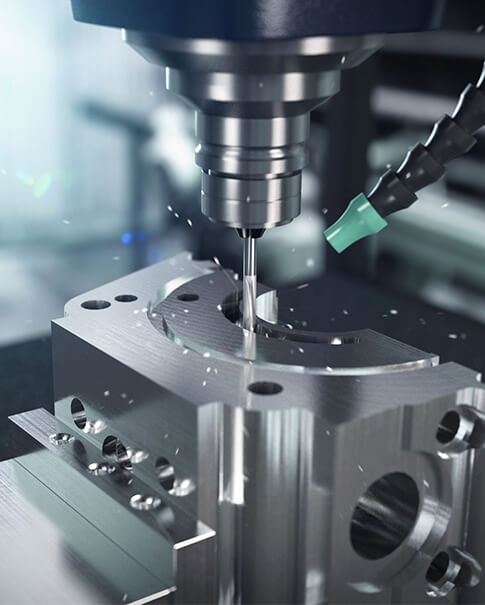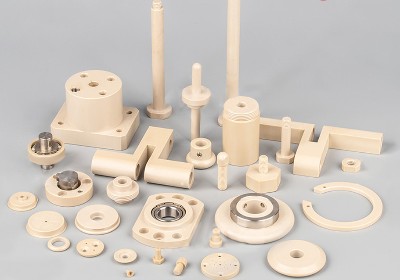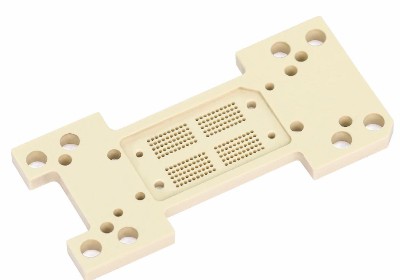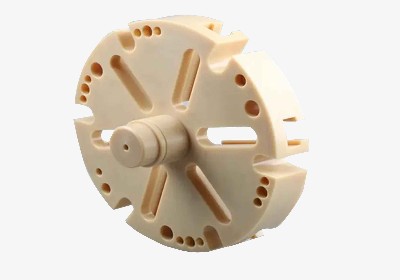
What is PEEK?
|
PEEK (polyetheretherketone), is one special engineering plastic material with very good mechanical properties, is a high-performance engineering thermoplastic and part of the PAEK family of materials. The semi-crystalline material is used for a wide range of industrial parts and components, exhibiting excellent strength, wear resistance, and abrasion resistance, and retaining its properties even at high temperatures. Found in objects as diverse as medical implants and electrical cable insulation. PEEK's melting point is 334℃, with superior dimensional stability, fatigue resistance, long-term load resistance and good wear resistance. It can be used for a long time at 250℃.Stable physical and chemical properties, suitable for oil, water, steam, weak acid and alkali and other harsh working environment. The high-performance PEEK plastic is available in granular form, in filament for 3D printing, and in bar / rod form for CNC machining. It is typically classified as either industrial-grade or medical-grade. |
 |
Advantages of PEEK
Material advantages:
Process advantages:
Limitations of PEEK machining
Comparing with common engineering plastic and metal, PEEK thermal expansion, heat dissipation performance is very different and special attention should be paid to the processing, otherwise it will cause product cracking, and even cause damage to production equipment.
Processing techniques
PEEK has long been a highly regarded engineering polymer for an almost infinite variety of applications. One of the reasons it remains popular is its processability: PEEK is well adapted to a number of polymer processing techniques.
For CNC machining PEEK
PEEK is a machinable thermoplastic, but critical steps must be taken before, during, and after machining to deliver the best end product.
Clamping force of fixture to prevent product deformation.
Use appropriate tools and coolant (coling liquid ) to ensure product accuracy. If the tool or cutter is not chosen properly, the cooling effect is not good, the tool wear, will cause product dimensional deviation or sizes out of spec.
Small cutting feed to reduce heat and tool wear, eonsure product accuracy.
For 3D printing PEEK, both FFF filaments and SLS powders are available.
Printing temperature: the actual printing temperature should be above 400℃, which requires constant temperature. It is recommended that the printing temperature reach 450℃, the hot bed temperature should be 120℃, and the thermostat temperature should be 90℃.
PEEK wire needs to be dried; When drying, the effect of adding desiccant into the thermostat will be more like;
After printing, annealing treatment can obtain better material properties. Annealing process: use oven, bake 10 minutes in 100℃ environment, bake 15 minutes in 150℃ environment after completion.
For Injection molding PEEK
Injection molding is one of the most common processing methods for producing plastic parts, PEEK included. In injection molding, molten plastic is injected (i.e., forced) at high pressure into a die. After cooling and solidification the part (or parts) is removed from the die. Minimal post-processing is required, and usually takes the form of trimming of flash and excess plastic.
Injection molding is good for thin-walled parts and can produce complex parts with fine detail. Injection molding results in a part with a good surface finish and excellent dimensional accuracy. Benefits, from a production point of view, include a high production rate and low labor costs. Drawbacks are high tooling, the possibility of long lead times, and high costs.
Applications of PEEK machining
PEEK is a material with a surprisingly diverse range of applications, some of which are best served by CNC machining over other manufacturing techniques. Industrial-grade PEEK plastic is used in the aerospace, automotive, chemical, electronics, and energy industries, while medical-grade PEEK plastic is used in healthcare and dentistr
 |
 |
GT proto in an experienced provider of PEEK machining, in addition to many other prototyping and CNC Machining services and parts. Request a free quote for your next project.